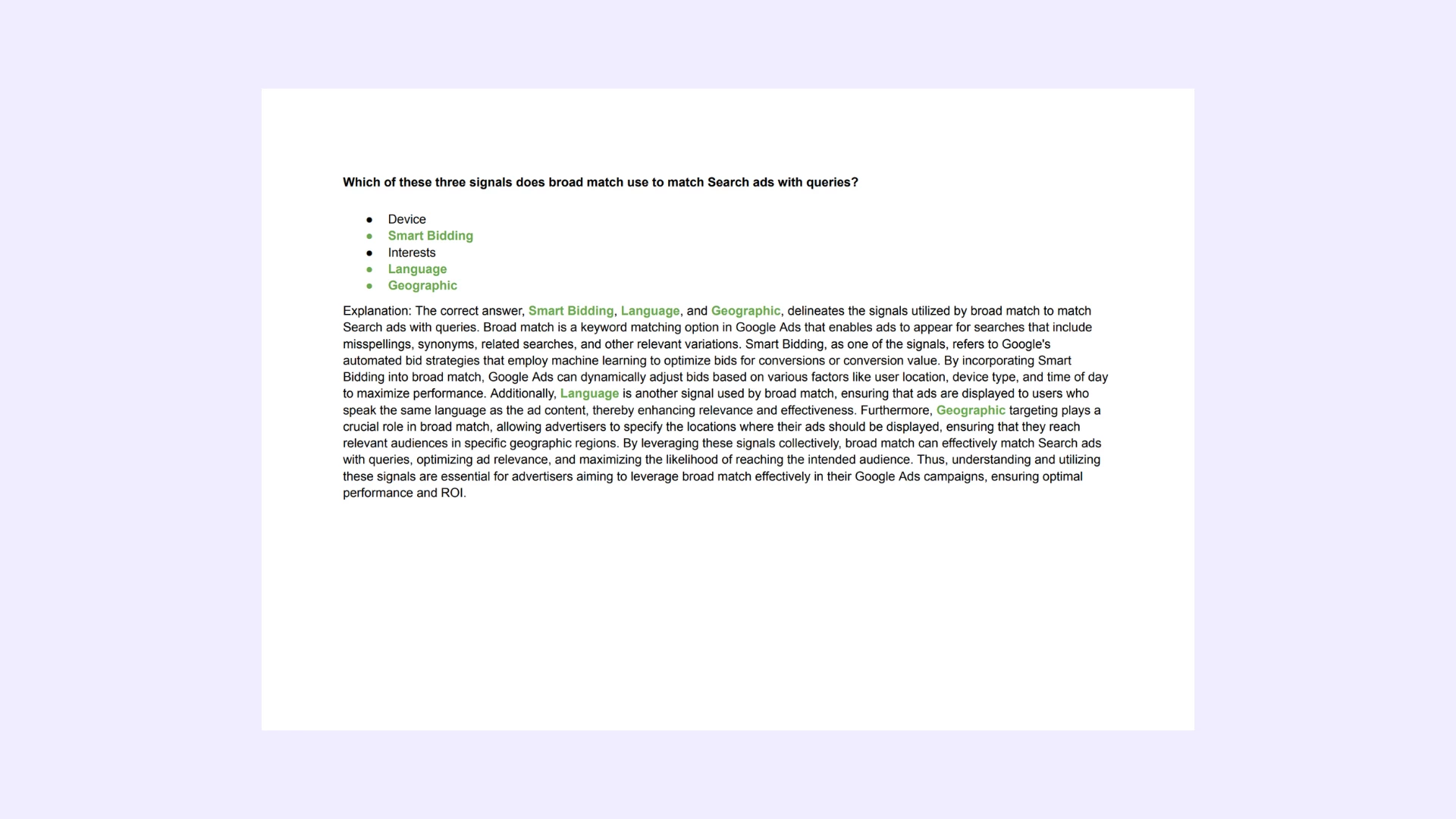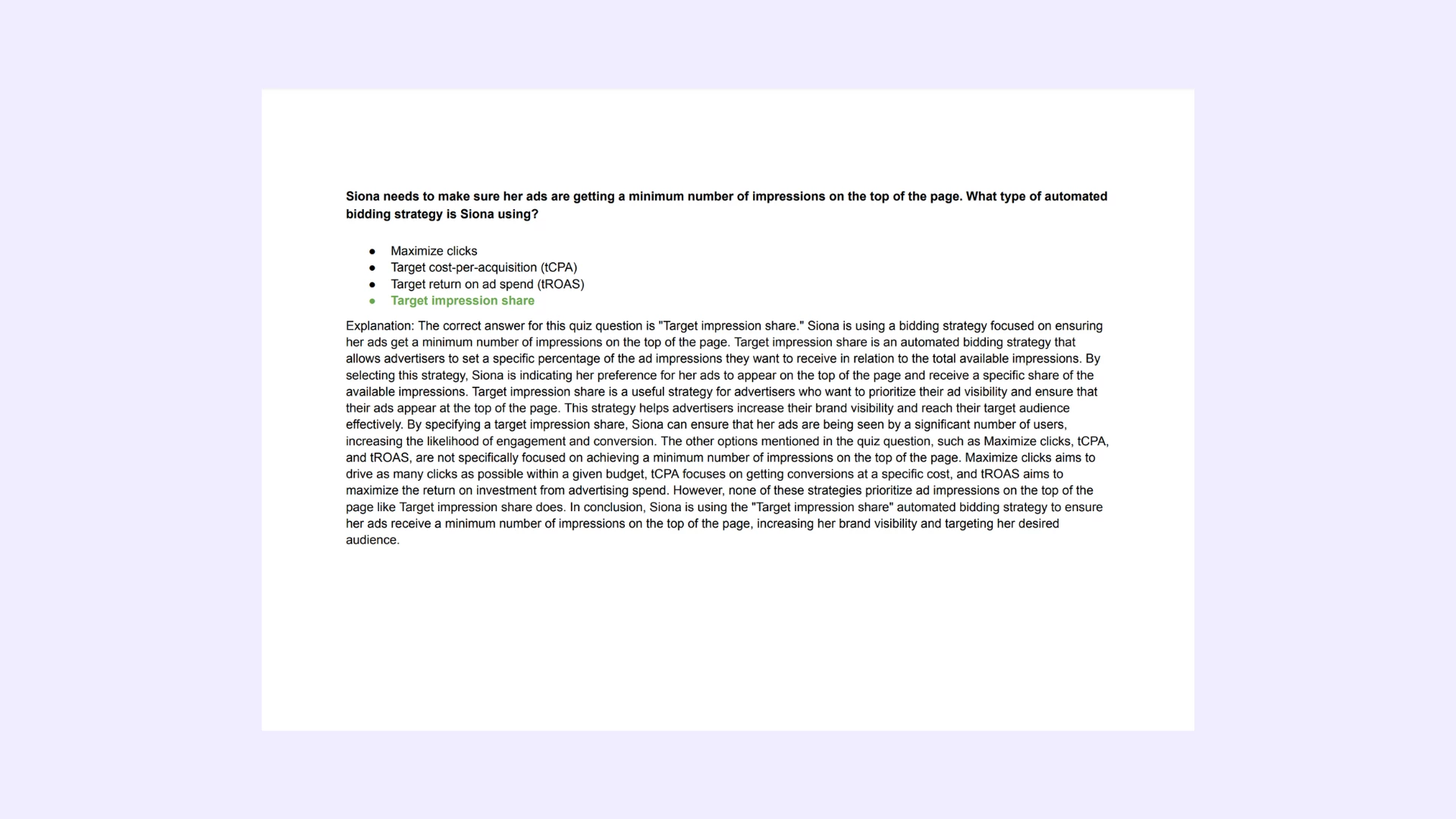How does Google characterize geo-based experiments?
Geo experiments use random geographic regions assigned to test group.
Geo experiments use non-overlapping geographic regions that are randomly assigned to a control or treatment group.
Geo experiments use overlapping geographic regions that are assigned to a control or treatment group.
Geo experiments use random geographic regions assigned to control group.
Choose an option to see if it’s correct. Check the explanation below. Learn Smarter, not Harder.

Google Ads Roll. Includes Answers for Every Real Google Ads Certification Exam.
All-in-One: Get all Google Ads exams answers with explanations in one bundle. This package includes answers for every current Google Ads certification. Regular updates to reflect the latest exam version. -> See what's included.
Questions | Answers | Explanations. Free Lifetime Updates.


Need a single cerification exam answers? Check out our -> list of certification exams answer keys. Learn Smarter. Obtain or Renew your certificates with peace of mind!
Explanation: How does Google characterize geo-based experiments?
Explanation: The correct answer is **Geo experiments use non-overlapping geographic regions that are randomly assigned to a control or treatment group**. Google characterizes geo-based experiments by employing non-overlapping geographic regions that are randomly assigned to either a control group or a treatment group. In this experimental setup, distinct geographic areas are selected for the control and treatment groups to ensure that there is no overlap between the regions being tested. This design helps in isolating the effects of the treatment variable, such as a new advertising strategy or promotional offer, from other external factors that could influence the outcomes. By randomly assigning regions to control and treatment groups, Google ensures that the experiment results are statistically reliable and that any observed differences in outcomes between the groups can be attributed to the experimental treatment. Options such as 'Geo experiments use random geographic regions assigned to test group' and 'Geo experiments use overlapping geographic regions that are assigned to a control or treatment group' do not accurately describe Google's approach to geo-based experiments, as they either lack random assignment or involve overlapping regions, which could introduce biases and confound the experimental results. Similarly, 'Geo experiments use random geographic regions assigned to control group' misrepresents the experimental design by implying that only one group is involved, whereas Google's approach typically involves both control and treatment groups. Therefore, the correct answer is indeed **Geo experiments use non-overlapping geographic regions that are randomly assigned to a control or treatment group** as it accurately characterizes Google's methodology for conducting geo-based experiments.
Were do I find this certification program?
This certification program is available on the Google SkillShop Platform. With our file, you can get certified in just a few minutes. Free updates are included.
Save time on exams and spend more time practicing.
Best-value Guides
- Special Bundle Offer Google_Ads_Roll
- Special Bundle Offer HubSpot_Exams_Roll
- Special Bundle Offer Google_SkillShop_Roll
- Special Bundle Offer Marketing_Platforms_Roll